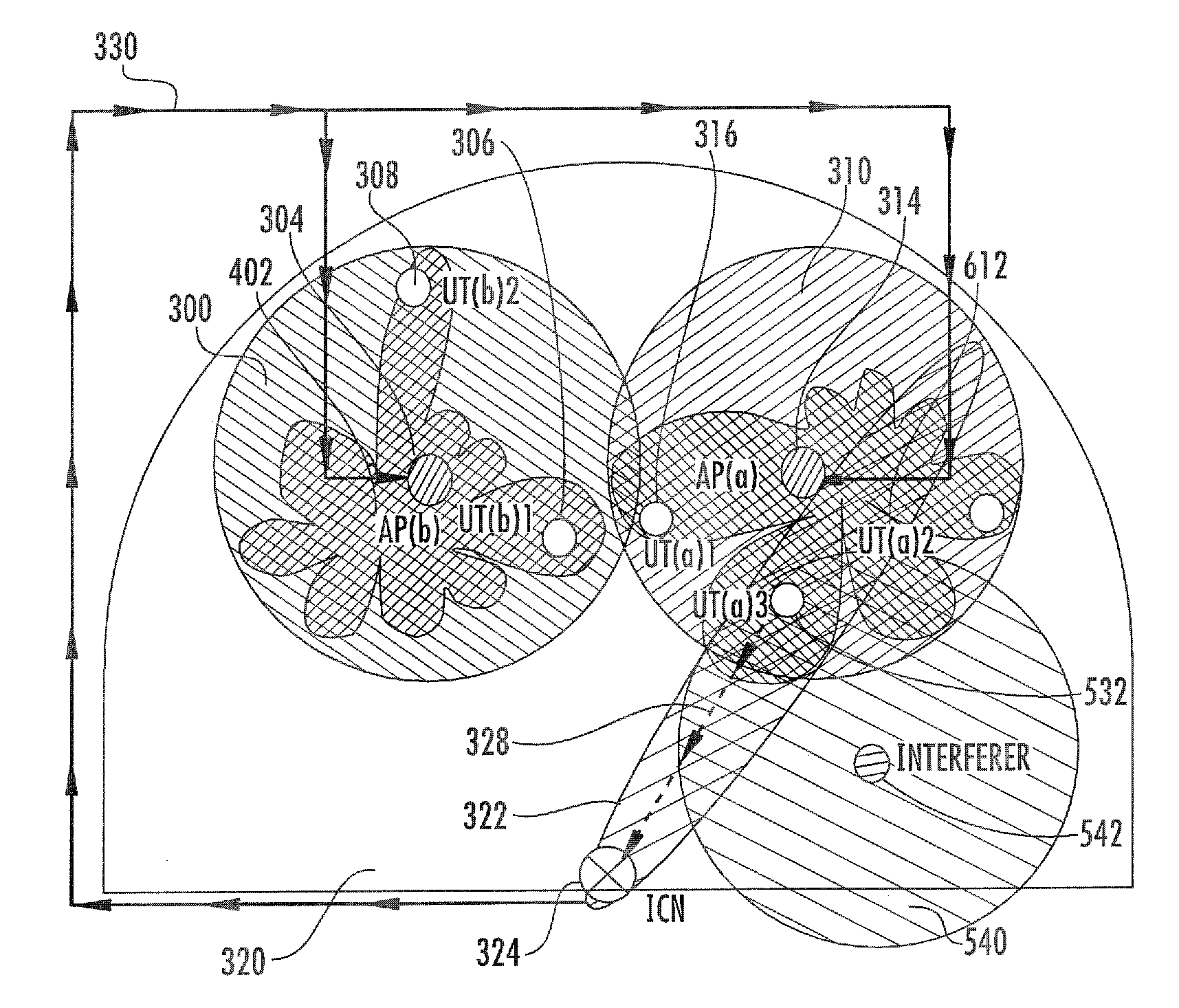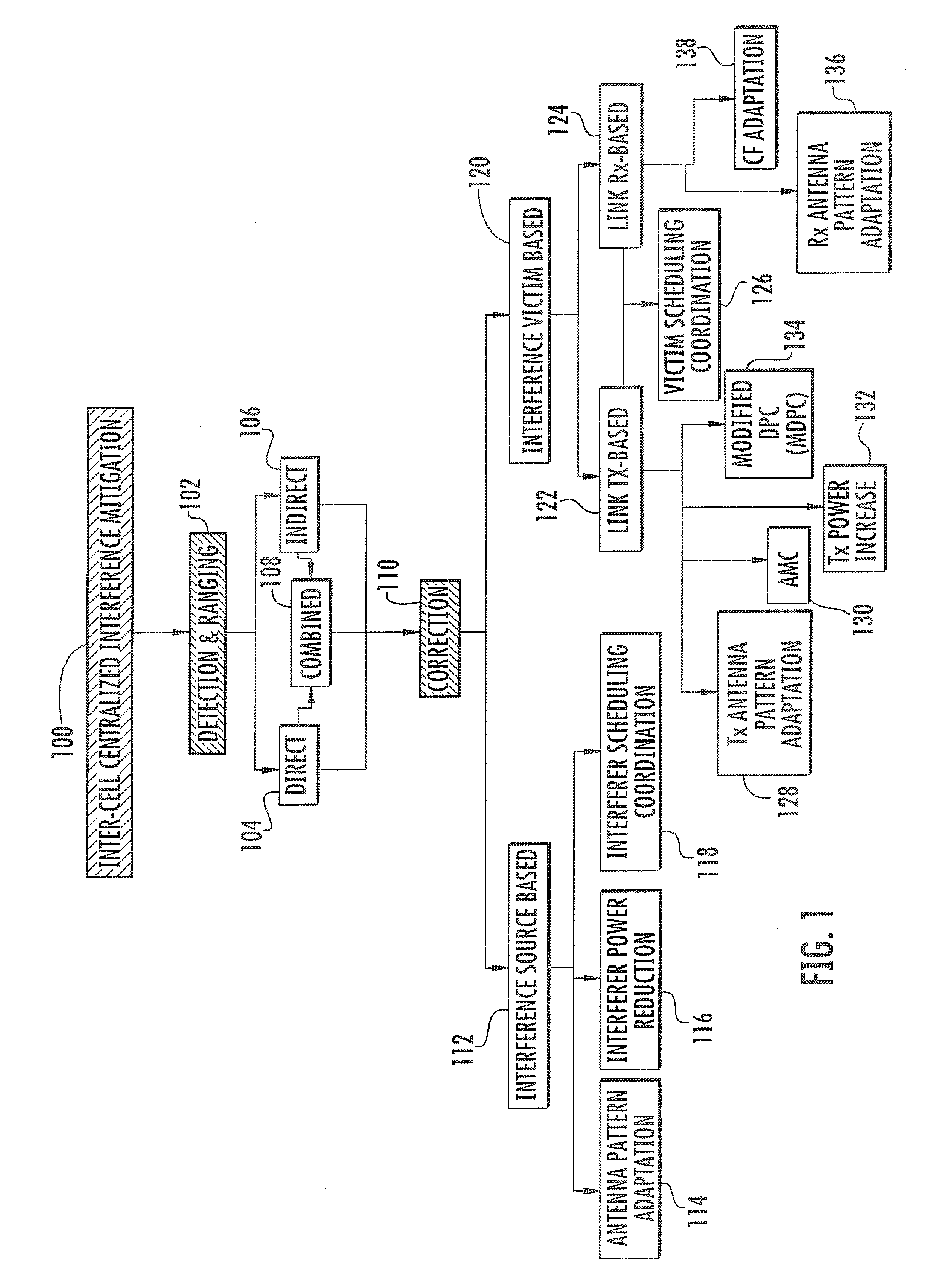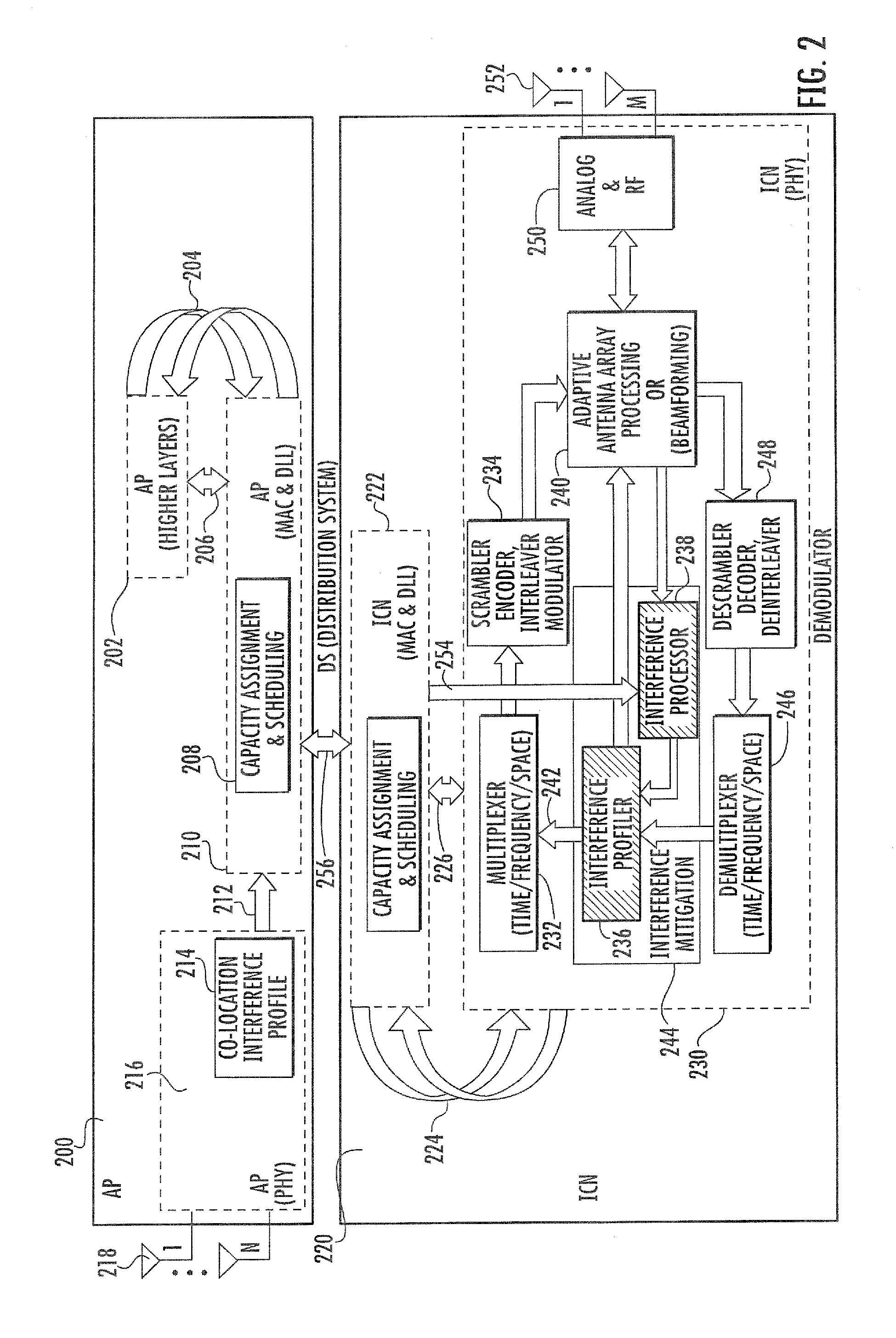Methods and apparatus for centralized and coordinated interference mitigation in a WLAN network
a wireless network and interference mitigation technology, applied in the field of interference mitigation in wireless networks, can solve the problems of affecting the overall network deployment cost, co-channel interference, adjacent channel interference, etc., and the scale of the problem, so as to reduce the cost of overall network deployment. the effect of reducing the cost of co-location interferen
- Summary
- Abstract
- Description
- Claims
- Application Information
AI Technical Summary
Benefits of technology
Problems solved by technology
Method used
Image
Examples
Embodiment Construction
This invention is targeted at inter alia addressing the harmful effect of interference, and in one particular aspect, co-channel interference when implementation of the conventional methodologies are not possible, not effective, inefficient and / or insufficient (e.g. for support of the application's QoS requirements, etc.), or whenever the effectiveness of these techniques can be further enhanced. There are in fact a number of likely implementation scenarios that could result in these situations.
As used herein, the STA (station) is used to refer to a device that has the capability to use the IEEE 802.11 protocol including MAC and PHY (e.g. a PC, a laptop, PDA etc.). However, from the network topology point of view, the Station is the infrastructure mode of the wireless device which enables connection with the Access Point. A Station, a node, and a client may be used interchangeably depending on the context. Note however that the invention is in no way limited to 802.11 networks or eq...
PUM
 Login to View More
Login to View More Abstract
Description
Claims
Application Information
 Login to View More
Login to View More - R&D
- Intellectual Property
- Life Sciences
- Materials
- Tech Scout
- Unparalleled Data Quality
- Higher Quality Content
- 60% Fewer Hallucinations
Browse by: Latest US Patents, China's latest patents, Technical Efficacy Thesaurus, Application Domain, Technology Topic, Popular Technical Reports.
© 2025 PatSnap. All rights reserved.Legal|Privacy policy|Modern Slavery Act Transparency Statement|Sitemap|About US| Contact US: help@patsnap.com



